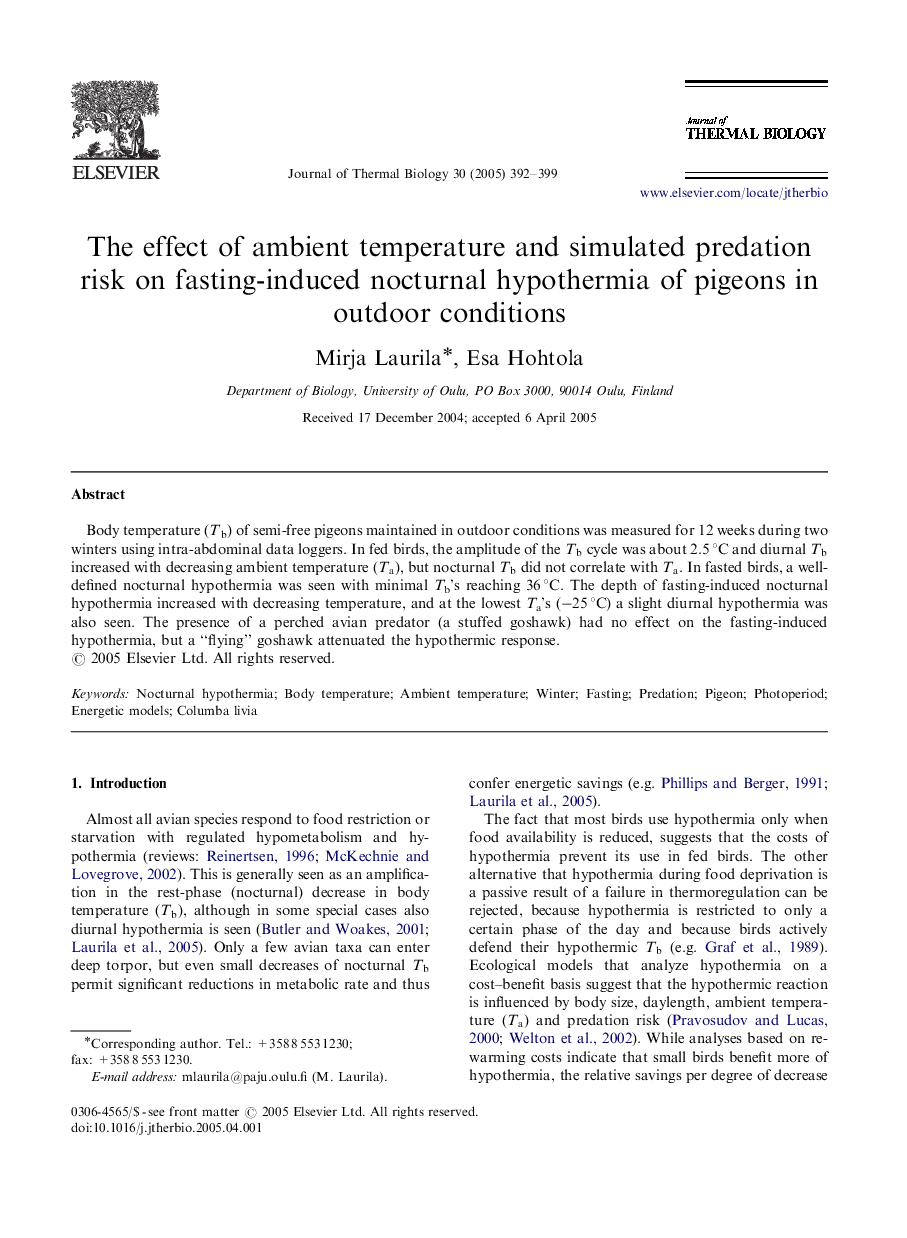| Article ID | Journal | Published Year | Pages | File Type |
|---|---|---|---|---|
| 9148999 | Journal of Thermal Biology | 2005 | 8 Pages |
Abstract
Body temperature (Tb) of semi-free pigeons maintained in outdoor conditions was measured for 12 weeks during two winters using intra-abdominal data loggers. In fed birds, the amplitude of the Tb cycle was about 2.5 °C and diurnal Tb increased with decreasing ambient temperature (Ta), but nocturnal Tb did not correlate with Ta. In fasted birds, a well-defined nocturnal hypothermia was seen with minimal Tb's reaching 36 °C. The depth of fasting-induced nocturnal hypothermia increased with decreasing temperature, and at the lowest Ta's (â25 °C) a slight diurnal hypothermia was also seen. The presence of a perched avian predator (a stuffed goshawk) had no effect on the fasting-induced hypothermia, but a “flying” goshawk attenuated the hypothermic response.
Related Topics
Life Sciences
Agricultural and Biological Sciences
Agricultural and Biological Sciences (General)
Authors
Mirja Laurila, Esa Hohtola,
